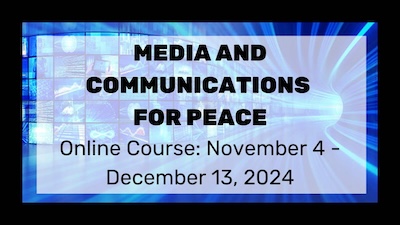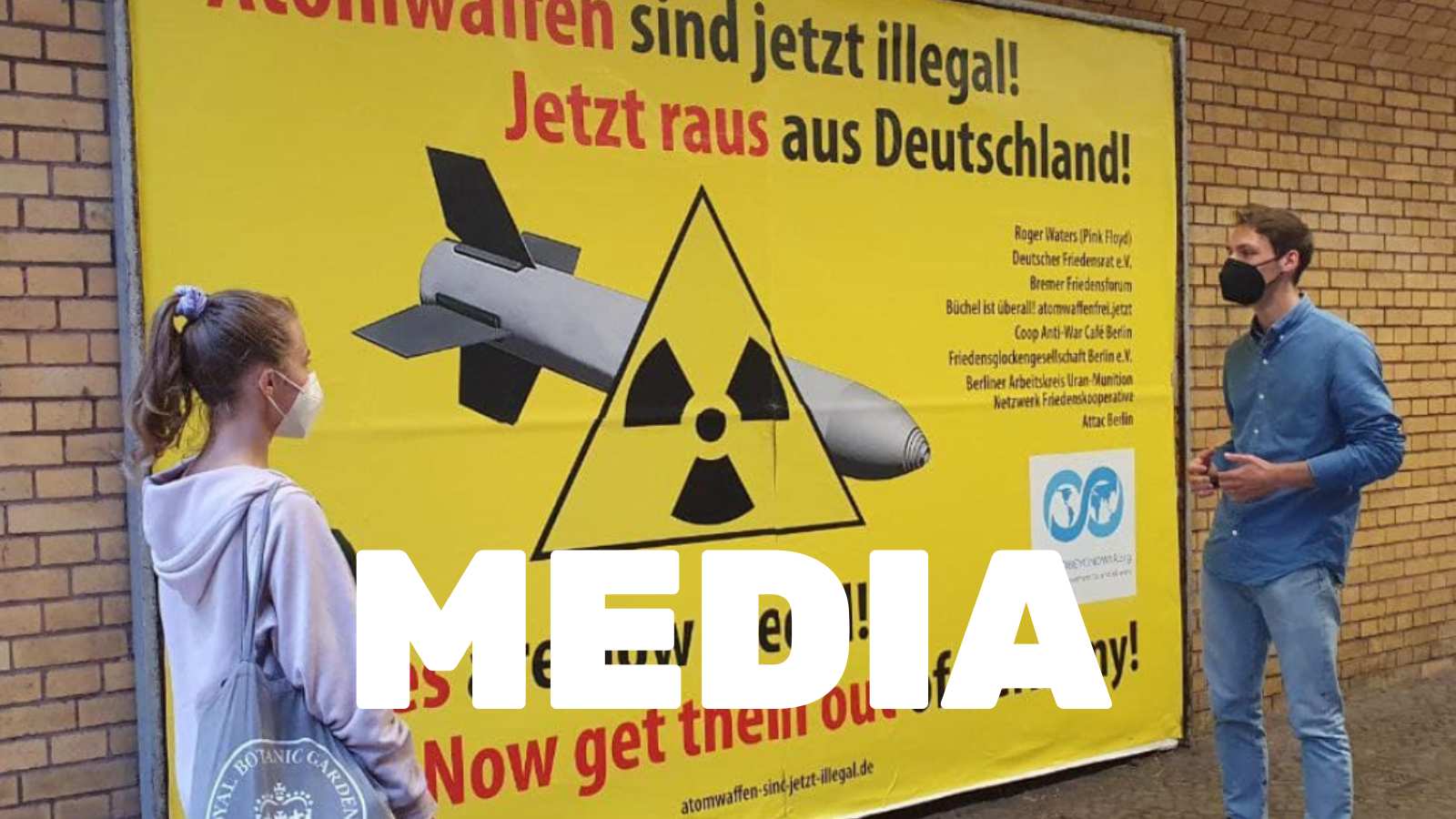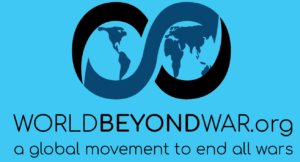By Ed O’Rourke
On September 26, 1983, the world was one person’s decision away from nuclear war. The military officer had to commit insubordination to stop an automatic process. Tensions were high, three weeks after the Soviet military shot down the passenger jet, Korean Air Lines flight 007, killing all 269 passengers. President Reagan called the Soviet Union “the empire of evil.”
President Reagan escalated an arms race and was pursing the Strategic Defense Initiative (Star Wars).
NATO was beginning a military exercise Able Archer 83 which was a thoroughly realistic rehearsal for a first strike. The KGB considered the exercise as possible preparation for the real thing.
On September 26, 1983, Air Defense Lieutenant Coronel Stanislav Petrov was the duty officer at the Soviet air defense command center. His responsibilities included monitoring the satellite early warning system and notifying his superiors when he observed a possible missile attack against the Soviet Union.
Shortly after midnight, the computers showed that an intercontinental ballistic missile was launched from the US and headed for the Soviet Union. Petrov considered this a computer error since any first strike would involve several hundred missiles, not just one. Accounts differ if he contacted his superiors. Later, the computers identified four more missiles launched from the US.
Had he notified his superiors, it is entirely possible that the superiors would have ordered a massive launch to the US. It was also possible, that as Boris Yeltsin decided in similar circumstances, to ride things out until there was solid evidence to show what was going on.
The computer system was malfunctioning. There was an unusual sunlight alignment on high-altitude clouds and the satellites’ Molniya orbits. Technicians corrected this error by cross-referencing a geostationary satellite.
The Soviet authorities were in a fix, at one time praising him and then reprimanding him. In any system, especially the Soviet one, do you start rewarding people for disobeying orders? He got assigned to a less sensitive post, took early retirement and suffered a nervous breakdown.
There is some confusion on what happened on September 23, 1983. My feeling is that he did not inform his superiors. Otherwise, why would he receive a less sensitive post and go to early retirement?
Not a single intelligence agency had any idea how close the world had come to nuclear war. It was only in the 1990s when Coronel General Yury Votintsev, a one-time Soviet Air Defense Missile Defense Unit commander, published his memoirs that the world learned about the incident.
One shudders to think what would have happened had Boris Yeltsin been in command and drunk. A US president could feel different pressures to shoot first and answer questions later, as if there would have been anyone alive to ask. When President Richard Nixon was reaching the end during the Watergate investigations, Al Haig gave orders to the Defense Department not to launch a nuclear strike on Richard Nixon’s command unless he (Al Haig) approved the order. The nuclear arms structure makes life on this planet is precarious. Former Defense Secretary Robert McNamera felt that people have been lucky rather than smart with nuclear weapons.
Nuclear war will bring unprecedented misery and death for all living beings on our fragile planet. A significant nuclear exchange between the US and Russia would put 50 to 150 million tons of smoke into the stratosphere, blocking out most sunlight in hitting the earth’s surface for many years. Some studies show that 100 Hiroshima-size nuclear weapons exploding in India and Pakistan’s cities could produce enough smoke to cause catastrophic climate change.
A typical strategic warhead has a 2 megaton yield or two million tons of TNT, the entire explosive power generated during World War II that would be let loose in a few seconds in an area 30 to 40 miles across. The thermal heat reaches several million degrees Celsius, about what is found at the sun’s center. A huge fireball releases deadly heat and light starting fires in all directions. Several thousand fires would quickly form a single fire or firestorm, covering hundreds or possibly thousands of square miles.
As the firestorm burns a city, the total energy generated will be 1,000 times greater than that released in the original explosion. The firestorm will produce toxic, radioactive smoke and dust killing virtually each living being in reach. In about a day, the firestorm smoke from a nuclear exchange would reach the stratosphere and block most sunlight hitting the earth, destroy the ozone layer and in a few days reducing the average global temperature to sub freezing. The Ice Age temperatures would remain for several years.
The most powerful leaders and rich could conceivably survive for a while in well equipped shelters. I have the idea that shelter inhabitants would become psychotic long before the supplies ran out and would turn on each other. Nikita Khrushchev noted in a nuclear war’s aftermath, that the living would envy the dead. Grass and cockroaches are supposed to survive a nuclear war but I think scientists made these predictions before they took nuclear winter seriously. I feel that the cockroaches and the grass would join everyone else soon enough. There will be no survivors.
To be fair, I have to point out that some scientists take my nuclear winter scenario as more drastic than their calculations would show. Some think it would be possible to limit or contain a nuclear war, once it started. Carl Sagan says this is wishful thinking. When missiles hit, there will be communications failure or collapse, disorganization, fear, feelings for revenge, compressed time to make decisions and the psychological burden that many friends and family members are dead. There will be no containment. Coronel General Yury Votintsev indicated, at least in 1983, the Soviet Union had only one response, a massive missile launch. There was no planned graduated response.
Why did the United States and the Soviet Union build nuclear weapons in the tens of thousands for each side? According to the National Resources Defense Council’s Nuclear Weapons Databook Project, the United States’ nuclear weapons peaked at 32,193 in 1966. It was around this time that the world weapons had the equivalent of 10 tons of TNT for every man, woman and child on earth. Winston Churchill objected to such overkill saying the only point was to see how high the rubble would bounce.
Why would the political and military leaders keep manufacturing, testing and modernizing these weapons in huge numbers? For many, nuclear warheads were just more weapons, just more powerful. There was no idea about overkill. Just as the country with the most tanks, aircraft, soldiers and ships had the advantage, the country with the most nuclear weapons had the greatest chance to prevail. For the conventional weapons, there was some possibility to avoid killing civilians. With nuclear weapons, there was none. The military scoffed at nuclear winter when Carl Sagan and other scientists first proposed the possibility.
The driving force was deterrence called Mutually Assured Destruction (MAD) and mad it was. If the US and the Soviet Union had enough weapons, intelligently dispersed in hardened sites or in submarines, each side would be able to launch enough warheads to inflict unacceptable damage to the attacking party. This was a balance of terror that meant that no general would start a war independently from political orders, there would be no false signals in the computers or radar screens, that political and military leaders are always rational people and that nuclear war could be contained after the first strike. This ignores Murphy’s famous law: “Nothing is as easy as it looks. Everything takes longer than you expect. If anything can go wrong, it will at the worst possible moment.”
The Nuclear Age Peace Foundation developed the Santa Barbara Declaration outlining major problems with nuclear deterrence:
- Its power to protect is a dangerous fabrication. The threat or use of nuclear weapons provides no protection against an attack.
- It assumes rational leaders, but there can be irrational or paranoid leaders on any side of a conflict.
- Threatening or committing mass murder with nuclear weapons is illegal and criminal. It violates fundamental legal precepts of domestic and international law, threatening the indiscriminate slaughter of innocent people.
- It is deeply immoral for the same reasons it is illegal: it threatens indiscriminate and grossly disproportionate death and destruction.
- It diverts human and economic resources desperately needed to meet basic human needs around the world. Globally, approximately $100 billion is spent annually on nuclear forces.
- It has no effect against non-state extremists, who govern no territory or population.
- It is vulnerable to cyber attack, sabotage, and human or technical error, which could result in a nuclear strike.
- It sets an example for additional countries to pursue nuclear weapons for their own nuclear deterrent force.
Some started worrying that the nuclear weapons manufacture and testing were sever threats to civilization. On April 16, 1960, some 60,000 to 100,000 people gathered at Trafalgar Square to “ban the bomb.” This was London’s largest demonstration up to that time in the twentieth century. There was concern for radioactive contamination in fallout from the nuclear tests.
In 1963, the United States and the Soviet Union agreed to the Partial Test Ban Treaty.
The Nuclear Non-Proliferation Treaty came into force on March 5, 1970. There are 189 signatories to this treaty today. Concerned with 20 to 40 countries having nuclear weapons by 1990, countries with the weapons promised to eliminate them to take away the incentive for more countries to develop them for self protection. The countries with nuclear technology pledged to share nuclear technology and materials with signatory countries to develop civilian nuclear energy programs.
There was no timetable in the treaty for weapons abolition. How long will countries refrain from manufacturing or acquiring nuclear weapons when other countries still have them? Certainly, the US and its allies would have been more cautious with Saddam Hussein and Muammar Omar Gaddafi had they had some nuclear weapons in their arsenal. The lesson for some countries is to build them quickly and quietly to avoid being pushed around or invaded.
Not just pot-smoking hippies but high ranking military officers and politicians have advocated scraping all nuclear weapons. On December 5, 1996, 58 generals and admirals from 17 nations issued the Statement by Generals and Admirals of the World Against Nuclear Weapons. Below are excerpts:
“We, military professionals, who have devoted our lives to the national security of our countries and our peoples, are convinced that the continuing existence of nuclear weapons in the armories of nuclear powers, and the ever present threat of acquisition of these weapons by others, constitute a peril to global peace and security and to the safety and survival of the people we are dedicated to protect.”
“It is our deep conviction that the following is urgently needed and must be undertaken now:
- First, present and planned stockpiles of nuclear weapons are exceedingly large and should now be greatly cut back;
- Second, remaining nuclear weapons should be gradually and transparently taken off alert, and their readiness substantially reduced both in nuclear weapons states and in de facto nuclear weapons states;
- Third, long-term international nuclear policy must be based on the declared principle of continuous, complete and irrevocable elimination of nuclear weapons.”
An international group (known as the Canberra Commission) convened by the Australian government in 1997 concluded, “The proposition that nuclear weapons can be retained in perpetuity and never used- accidentally or by decision- defies credibility.”
|
In the Wall Street Journal’s January 4, 2007 issue former Secretaries of State George P. Schultz, William J. Perry, Henry Kissinger and former Senate Armed Forces chairman Sam Nunn endorsed “setting the goal of a world free of nuclear weapons.” They quoted former president Ronald Reagan’s call for abolishing all nuclear weapons which he considered “totally irrational, totally inhumane, good for nothing but killing, possibly destructive of life on earth and civilization.”
An intermediate step to abolition is taking all nuclear weapons off hair-trigger alert status (ready to launch with 15 minutes notice). This will give military and political leaders time to assess perceived or actual threats. The world came close to nuclear destruction not just on September 23, 1983 as previously described but also on January 25, 1995 when Norwegian scientists and American colleagues launched a satellite designed to study the Northern Lights. Although the Norwegian government had notified the Soviet authorities, not everyone got the word. To the Russian radar technicians, the rocket had a profile that resembled a Titan missile that could blind the Russians’ radar defense by exploding a nuclear warhead in the upper atmosphere. The Russians activated the “nuclear football,” the briefcase with the secret codes needed to order a missile attack. President Yeltsin came within three minutes of ordering his seemingly defensive nuclear attack.
A negotiated international settlement to put all nuclear weapons on a four hour or 24 hour alert status would give time to consider options, test the data and avoid war. At first, this alert time may seem excessive. Remember that missile carrying submarines have enough warheads to fry the world several times over even in the unlikely event that all land-based missiles were knocked out.
Since only 8 pounds of weapons grade plutonium are necessary to build an atom bomb, phase out nuclear energy. Since the world annual production is 1,500 tons, potential terrorists have many sources to choose from. Investment in alternative fuels will help save us from global warming and shut down the terrorists’ ability to construct nuclear weapons.
To survive, mankind must make greater efforts in peacemaking, human rights and a worldwide anti-poverty program. Humanitarians have advocated these things for many years. Since nuclear weapons are expensive to maintain, their elimination will free up resources to improve life on earth and stop playing Russian roulette.
Banning the bomb in the 1960s was something advocated only by a leftist fringe. Now we have a cold blooded calculator like Henry Kissinger calling for a nuclear weapons free world. Here is someone who could have written The Prince had he lived in the sixteenth century.
Meanwhile military establishments have to train themselves to keep their fingers off the nuclear triggers when there is an unauthorized or accidental launch or a terrorist strike. Humankind cannot allow one unfortunate event cascade into a catastrophe that would end civilization.
Surprisingly, there is some hope from the Republican Party. They like cutting the budget. When Richard Cheney was Defense Secretary, he eliminated many military bases in the US. Ronald Reagan wanted to abolish nuclear weapons. The Kellogg-Briand Treaty which called for war abolition was accomplished when Calvin Coolidge was president.
Only inertia and profits from defense contracts keep the nuclear structure in existence.
Our media, political and military establishments must step up to the plate to bring about a peaceful world. This would call for transparency and cooperation avoiding secrecy, competition and business as usual. Humans must break this endless war cycle before the cycle ends us.
Since the US had 11,000 nuclear weapons, President Obama can order dismantling 10,000 within a month to come one step closer to President Reagan’s and humankind’s dream.
Ed O’Rourke is a former Houston resident. He now lives in Medellin, Colombia.
Main Sources:
Bright Star Sound. “Stanislav Petrov – World Hero. http://www.brightstarsound.com/
Generals and Admirals Statement of the World Against Nuclear Weapons, Canadian Coalition for Nuclear Responsibility web site, http://www.ccnr.org/generals.html .
Nuclear Darkness web site (www.nucleardarkness.org) “Nuclear Darkness,
Global Climate Change and Nuclear Famine: The Deadly Consequences of Nuclear War.”
Sagan, Carl. “The Nuclear Winter,” http://www.cooperativeindividualism.org/sagan_nuclear_winter.html
Santa Barbara Statement, Canadian Coalition for Nuclear Responsibility web site, http://www.ccnr.org/generals.html .
Wickersham, Bill. “The Insecurity of Nuclear Deterrence,” Columbia Daily Tribune, September 1, 2011.
Wickersham, Bill. “Nuclear Weapons Still A Threat,” Columbia Daily Tribune, September 27, 2011. Bill Wickersham is an adjunct professor of peace studies and a member of the Missouri University Nuclear Disarmament Education Team (MUNDET).
Wickersham, Bill. and “Nuclear Deterrence a Futile Myth” Columbia Daily Tribune, March 1, 2011.
Bright Star Sound. “Stanislav Petrov – World Hero. http://www.brightstarsound.com/








